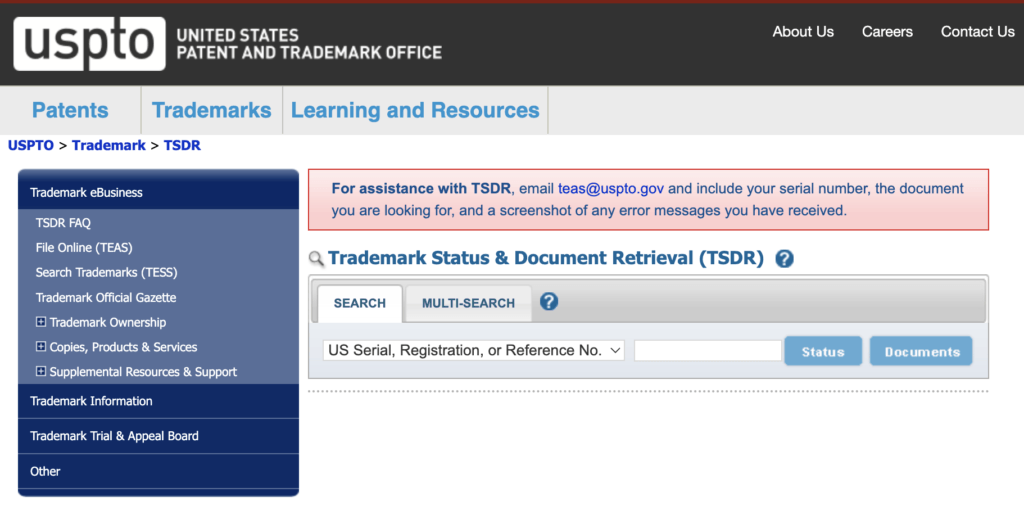
Your Guide to Trademark Registration for Small Businesses & Startups
When entrepreneurs, technology startups and small business begin the journey for intellectual property protection in the United States, particularly trademark protection, the timelines and phases of trademark registration in the United States Patent and Trademark Office (USPTO) become paramount considerations so as to align with startup launch date.
Trademark registration is an important process for businesses that want to protect their brand name, logo, or slogan under US Trademark Laws. However, the application process can take some time, and it can be difficult to know when you will receive your trademark registration certificate. In this blog post, we will discuss the timelines for pending trademark applications and how to check their status.
Timelines for Pending Trademark Applications
The length of time it takes to receive a trademark registration certificate can vary depending on a number of factors. In general, the process can take anywhere from six months to a year or more. The timeline for your application will depend on the following:
- The complexity of your application – If your trademark is complex or similar to other trademarks, it may take longer for the USPTO to process your application.
- The number of applications currently being processed – If there are a large number of trademark applications currently being processed, it may take longer for your application to be reviewed.
- The responsiveness of your attorney – If you have hired an attorney to help you with your trademark application, their responsiveness can affect the timeline. If they are slow to respond to requests for information, it can delay the process.
- The completeness of your application – If your application is missing information or contains errors, it will take longer for the USPTO to process your application.
How to Check the Status of Your Trademark Application
Once you have submitted your trademark application, you can check its status online through the Trademark Electronic Application System (TEAS). Here’s how:
- Go to the TEAS website at https://tsdr.uspto.gov/ and click on “Check Status” in the top right corner.
- Enter your serial number or registration number in the search box.
- Click on “Submit.”
You will be taken to a page that displays the current status of your trademark application. If your application is still pending, you will see a message indicating that it is “Under Review.”
You can also check the status of your application by calling the USPTO’s Trademark Assistance Center at 1-800-786-9199.
If your application has been rejected, you will receive a notice from the USPTO outlining the reasons for the rejection. You will have the opportunity to respond to the rejection and provide additional information to support your application.
The Comprehensive Guide to Trademark Registration: A Step-by-Step Process
Navigating the trademark registration process can be a daunting task for many businesses. However, understanding each step can simplify the journey. This guide breaks down the trademark registration process with the United States Patent and Trademark Office (USPTO) into easy-to-understand steps.
1. Filing the Trademark Application in the USPTO
Begin by filing an application with the USPTO, indicating your genuine intention to use the trademark in commerce. Once submitted, your application will be assigned a unique USPTO serial number. To monitor the progress of your application, use the Trademark Status and Document Retrieval (TSDR) system or contact the trademark status line. Typically, after a period of six to nine months, you’ll transition to the next step.
2. Preliminary Review of Trademark Application by USPTO Examining Attorney
The USPTO will first ensure your application meets the basic filing requirements. If it does, an examining attorney will be assigned to review your application in detail. It’s essential to note that filing fees are generally non-refundable, even if your application is later denied. Expect to move to the subsequent steps within a month.
3. Outcome of the Preliminary Review BY USPTO EXAMINING ATTORNEY
There are two potential outcomes at this stage:
a. Approval and Publication of Trademark Application:
If the examining attorney finds no issues and all legal criteria are met, your trademark will be slated for publication in the USPTO’s Trademark Official Gazette (TMOG). This online weekly publication serves as a public notice of upcoming trademark registrations. Once approved, your trademark will appear in the TMOG within a month.
During the 30 days following the publication, any party believing they might be adversely affected by the registration of your trademark can file an opposition. This process, overseen by the Trademark Trial and Appeal Board (TTAB), is akin to a federal court proceeding. If an opposition arises, it’s advisable to consult with a U.S.-licensed attorney due to the complexity of these proceedings.
b. Issuance of an Office Action on the Trademark Application by USPTO:
If the examining attorney identifies issues or if your application doesn’t meet all legal requirements, you’ll receive an office action detailing the problems. You have three months from the issuance date to respond, with an option to request a three-month extension for a fee.
4. Responding to the Office Action on a Trademark Application
Your response to the office action can lead to two scenarios:
a. Successful Response to Trademark Office Action:
If your response addresses all concerns raised by the examining attorney, your application will proceed.
b. Inadequate Response to Trademark Office Action:
Failure to respond within the stipulated time or not adequately addressing the concerns will result in the abandonment of your application. If abandoned, you’ll receive a Notice of Abandonment. To revive your application, a petition must be filed within two months of the notice, accompanied by the appropriate fee.
5. Further Review and Potential Final Trademark Office Action
If your initial response doesn’t resolve all issues, the examining attorney might issue a final office action. At this point, you can either appeal the decision with the TTAB or submit a revised response.
6. Appeal Process For Trademark Office Action in the USPTO
If you choose to appeal, the TTAB will review your case. If your response still doesn’t address all concerns and no appeal is filed, your application will be abandoned.
7. Trademark Application Notice of Allowance (NOA)
After successfully navigating the previous steps, the USPTO will issue a Notice of Allowance (NOA) within two months post-publication in the TMOG. This isn’t a registration but indicates that your trademark will be registered once you file an acceptable Statement of Use (SOU).
8. Final Steps: SOU and Registration
Upon receiving the NOA, you have six months to either file an SOU or request an extension. If you’re already using the trademark in commerce, submit the SOU with the required fees. Once the USPTO approves the SOU, your trademark will be registered within two months.
9. Maintaining Your Trademark
To keep your trademark active, you must periodically file maintenance documents and fees. Between the fifth and sixth year post-registration, a Section 8 declaration is required. Every ten years, a combined Section 8 and Section 9 renewal is necessary.
While the trademark registration process with the USPTO is intricate, understanding each step can make the journey smoother. Always consider seeking legal counsel with an experienced trademark and startup attorney to ensure all requirements are met and to navigate any challenges that arise. Attorney David Nima Sharifi can help you navigate these steps. Contact LA Tech & Media Law today to discuss your needs with our team.



